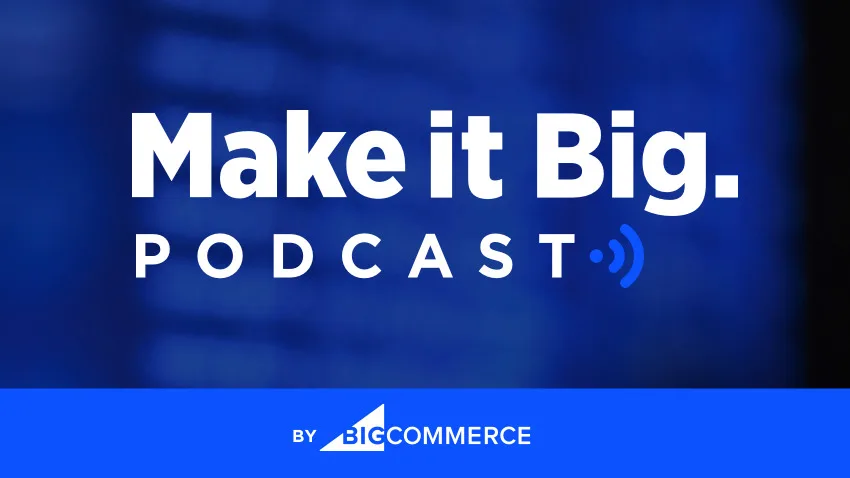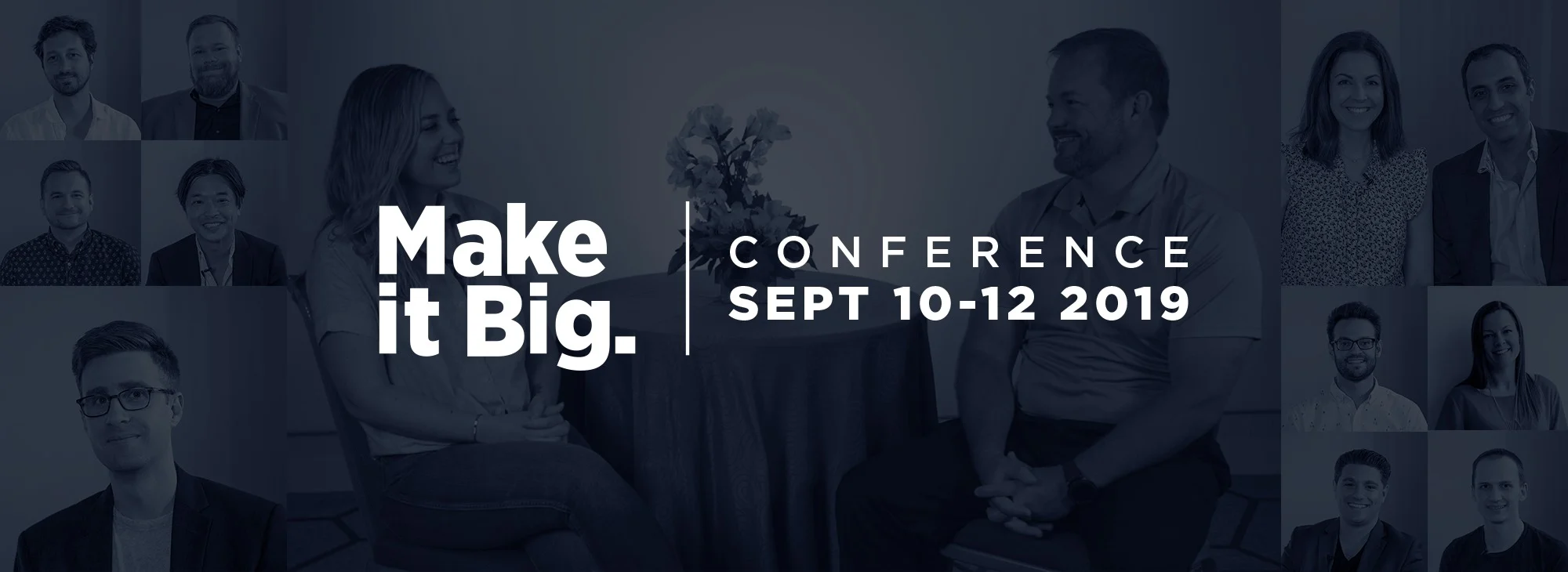
Ecommerce insights on the go
Tune in to the Make it Big Podcast — our thought leadership audio series for retailers, entrepreneurs and ecommerce professionals. You'll get expert insights, strategies and tactics to help grow your business.

Why Should Buying a Sofa Be So Hard? How Burrow Changed The DTC Furniture Landscape


Why Should Buying a Sofa Be So Hard? How Burrow Changed The DTC Furniture Landscape
Get The Print Version
Tired of scrolling? Download a PDF version for easier offline reading and sharing with coworkers.
A link to download the PDF will arrive in your inbox shortly.
In an increasingly digital world, the customer experience has evolved and become more important to a brand’s success.
Consumers are now accustomed to convenience, flexibility, and well-designed user experiences at every step of a purchase.
These are the standards that customers have set — and what growth-driven brands must adhere to in order to capture those customers.
Several years ago, my co-founder and I witnessed a poor customer experience — and turned that learning around to create our direct-to-consumer (DTC) furniture business, Burrow.
Let’s explore how we got our start and how we married content, customer experience, and ecommerce functionality to create a new kind of furniture experience.
The Story Behind Burrow
Burrow began back in April 2017, but the idea for the company started a few years before that.
A few years ago, my co-founder, Kabeer, and I moved to Philadelphia to start business school, and when it came time to buy furniture, we ran into many challenges. Sofas in particular were the biggest pain point for each of us.
Like most furniture consumers, we were faced with a decision: do we buy cheap, flimsy, disposable furniture that we’re going to throw away when we move in a few years — or do we invest in nicer pieces that are going to take several weeks to ship, and are difficult to move into small spaces.
We ended up going opposite directions. I went the cheap, flimsy, disposable route, and he went the more luxurious route — and still, both of us made sacrifices. For instance, Kabeer borrowed a cart and rolled his sofa all the way home on the sidewalk to avoid a 12-week delivery timeline.
I, on the other hand, spent hours assembling my sofa. It’s safe to say that both customer experiences were less than ideal. We thought, “There’s got to be a better way to buy furniture.”
So, we made one — and named it Burrow.
Behind the Journey of Building a DTC Brand
Many shopping categories have been disrupted by the direct-to-consumer (DTC) model.
If you know anything about furniture, you know that it’s a super outdated, backwards industry. When we started building our company, I attended a furniture conference where one of the sessions posed the question, “Is the internet really going to be a thing of the future for buying furniture? Are people really going to buy online?”
I simply thought, “Of course it is.”
In our eyes, direct-to-consumer is more than just the experience of buying something online and shipping it directly to consumers, as opposed to going to retail. It’s about delivering a different, more personalized, customer experience.
You’ll notice a lot of direct-to-consumer brands are:
Very focused on the customer,
Continually creating a better end-to-end experience, and
Building more transparency into the products that they’re selling.
This is what we really bought into: how do we create a better product and a better experience for customers in furniture?
Content Creativity: A Pillar to Competitive Success
Creating content, especially for such a tactile product like furniture, requires even more education. It’s a challenge to highlight all of the sensory elements In an online shopping experience.
We’ve solved for that by creating visual content — for example, shooting photography or videography that communicates comfort by showcasing all the attributes of the sofas, the way real people are living these days
The first step in creating a content strategy is to deeply understand the audience. Go beyond the demographics (like age or gender) and get to know who those people are. For us, these are people that are using their sofa for more than just sitting — they’re binge-watching TV, taking naps, relaxing or playing with their pets, drinking wine, and more.
How do you communicate that we’ve created a product that can withstand all of that and be super comfortable, all with just content on your website? It’s a creative challenge.
The furniture industry is often times stale, and the same goes for its content. If you look at all the content from the biggest furniture brands, you can cover up the logos on their catalogs and not tell the difference. Whether it’s Restoration Hardware, West Elm, CB2, Crate and Barrel — they all have these beautiful, aspirational sets that they’ve created with their furniture in it.
There’s no people in it and there’s no mess, right? That doesn’t sound like the real world of how people use furniture.
By taking a creative approach to our content, we communicate in a different way, where it’s showing real people interacting with their homes. It’s a little bit messy, but it looks nice — more importantly, realistic.
What we’re communicating to our customers is that we understand how you live with your furniture and how you interact with it. So, because we know you better than any other furniture brand out there, we can create more thoughtfully designed furniture for you.
Plus, instead of making you scroll through thousands of different furniture products, we’ve created the perfect sofa for you. We’re going to create the perfect coffee table for you and the perfect rug for you, and here’s the reason why. Here’s all the research that we’ve done that says this is perfect for you.
When they identify with that, they’re like, “This is great. This is super convenient for me.”
Mapping Customer Journeys with Ecommerce Functionalities
In going DTC, I think it’s really important to understand the product you’re selling. Some products lend themselves better to different tactics than others. So, for instance, there are products that are very high impulse purchases. You could see a Facebook or an Instagram ad and say, “Oh, that’s cool. It’s not expensive. I’m going to buy it.” Quick conversion.
In that scenario, you’re trying to create content that can communicate the entire value proposition, all in wanting to get you to buy. On the other hand, with a sofa for instance, it’s a highly considered purchase. For Burrow, the average time from when somebody hears about our brand to when they make a purchase is about a month.
This makes perfecting the customer experience a little more challenging. It requires you to have a lot of touchpoints with a customer, and there’s no one value proposition that’s all rolled up into one message that you say to them over and over and over again.
To succeed online, you need to understand the following things:
How your product fits into someone’s mindset,
How they think about buying it and where are they open to learning about it, and
What are the barriers to them buying it online?
Once you understand your customers’ behavior, you have to provide the right information — at the right time — at the right location.
Mapping out the customer journey will help determine what ecommerce functionalities are essential to your online business.
For us, our product is complicated (seriously, you can make over a thousand different combinations of our products). If you were to make an armchair, you take one seat and one set of arms. If you want a loveseat, it’s two seats and a set of armrests — and when a customer places an order, our factory sends the correct parts.
When customers place their orders, they’re not thinking in terms of building parts. Instead they’re thinking, “I’m going to buy two loveseats.” Being able to easily translate the full product to the individual parts on the backend has been a huge benefit to both our customers and order fulfillment management.
In addition, being able to run various promotions, and even different tiered promotions on different parts of the product, is a large benefit BigCommerce has brought to our business, especially as, surprisingly, not many other platforms offer this feature.
From a content perspective, BigCommerce has also been really great to us. We can create customized templates on the front end to engage with customers and then take them through the journey.
While some ecommerce platforms offer completely customized front end development with many APIs plugged in the back end, it forces you to rely completely on an engineering team to custom-code every change. It’s incredibly cumbersome and slow.
With BigCommerce we can create our own customized templates and then ecommerce and marketing teams run different tests on different versions of those — and they’re all customized. But once you’ve got the templates set, you have that speed to make changes, and that’s been incredibly helpful for us.
Summary
From our early conception to our success today, we’ve continued to focus on the customer experience at Burrow.
Focusing on the customer experience has enabled our business to stand out from our competitors, create meaningful conversion-driving content, and create an ecommerce store that addresses each of our individual customer’s needs.
Join us for this year’s Make It Big Conference in order to unlock the full story of Burrow and key DTC market strategies for selling successfully online.

Stephen Kuhl is the co-founder and CEO of Burrow, a start-up that's reinventing the furniture industry. Burrow’s mission is to offer clever, comfortable, and long-lasting furniture - that ships the same week it's ordered - all with an unparalleled customer experience. In 2018, Burrow opened a flagship showroom in New York City’s SoHo neighborhood, was named one of the 10 most innovative retail brands in the world by Fast Company, and the Burrow sofa was named of the 50 best inventions of the year by TIME. Stephen started his first company after college when he co-founded an education start-up that helped place international students into private U.S. boarding schools and gain admission to top universities. More recently, he invested in several high-growth businesses while at Commonfund Capital. He also worked in Accenture’s Global Strategy group, specializing in operating model design for consumer and enterprise businesses. Stephen has a B.S. from Cornell University and an M.B.A. from The Wharton School at the University of Pennsylvania. Stephen enjoys angel investing and outdoor sports in his spare time.


